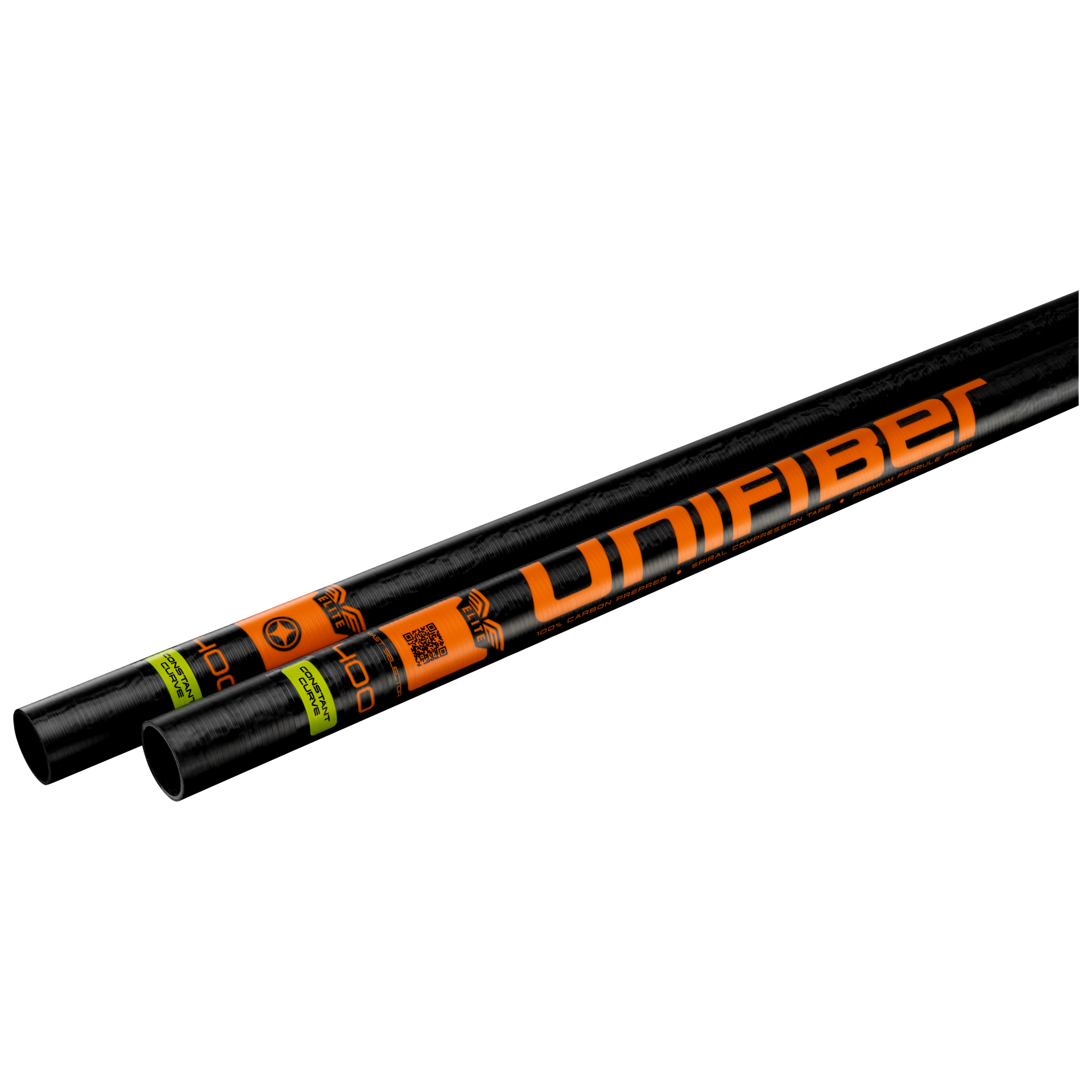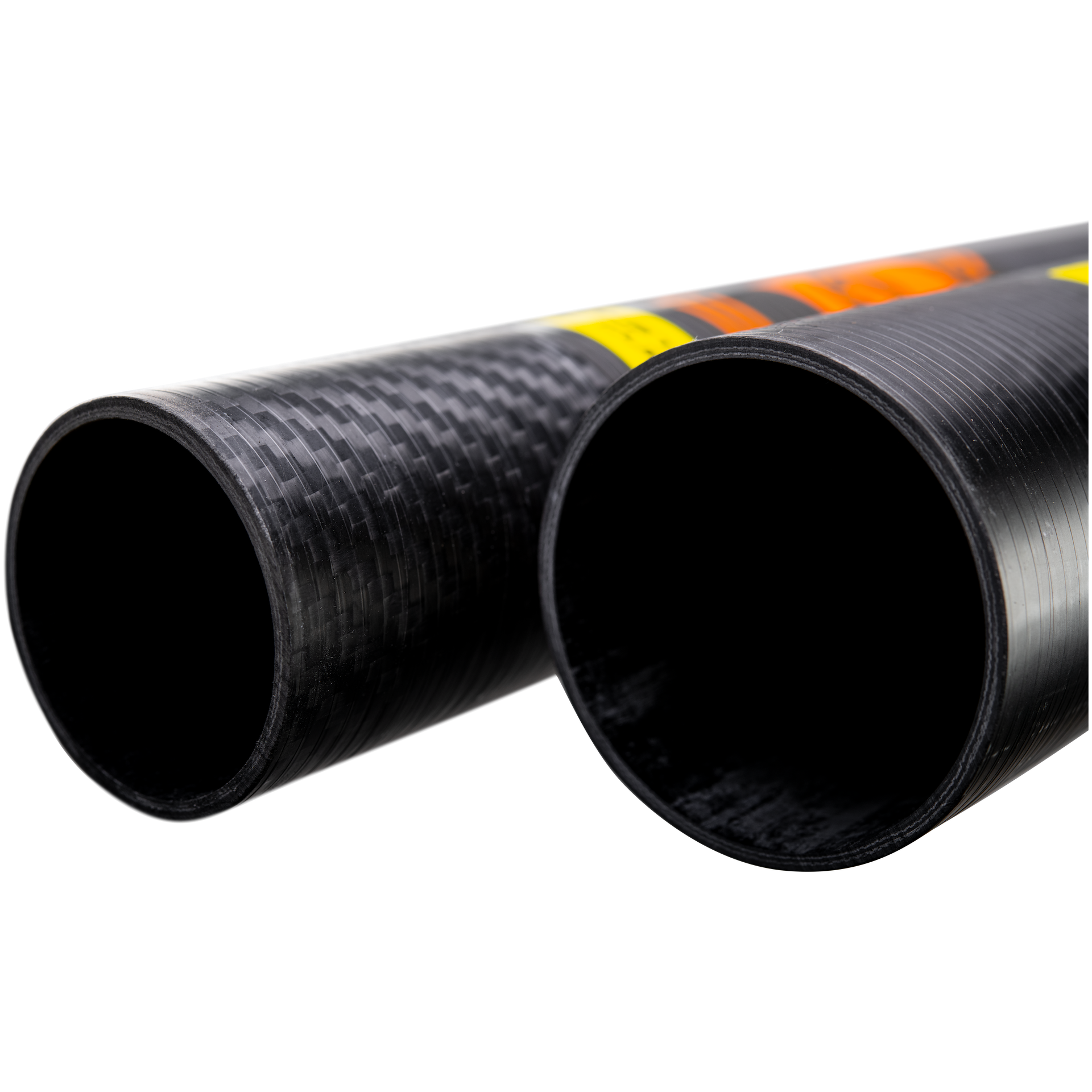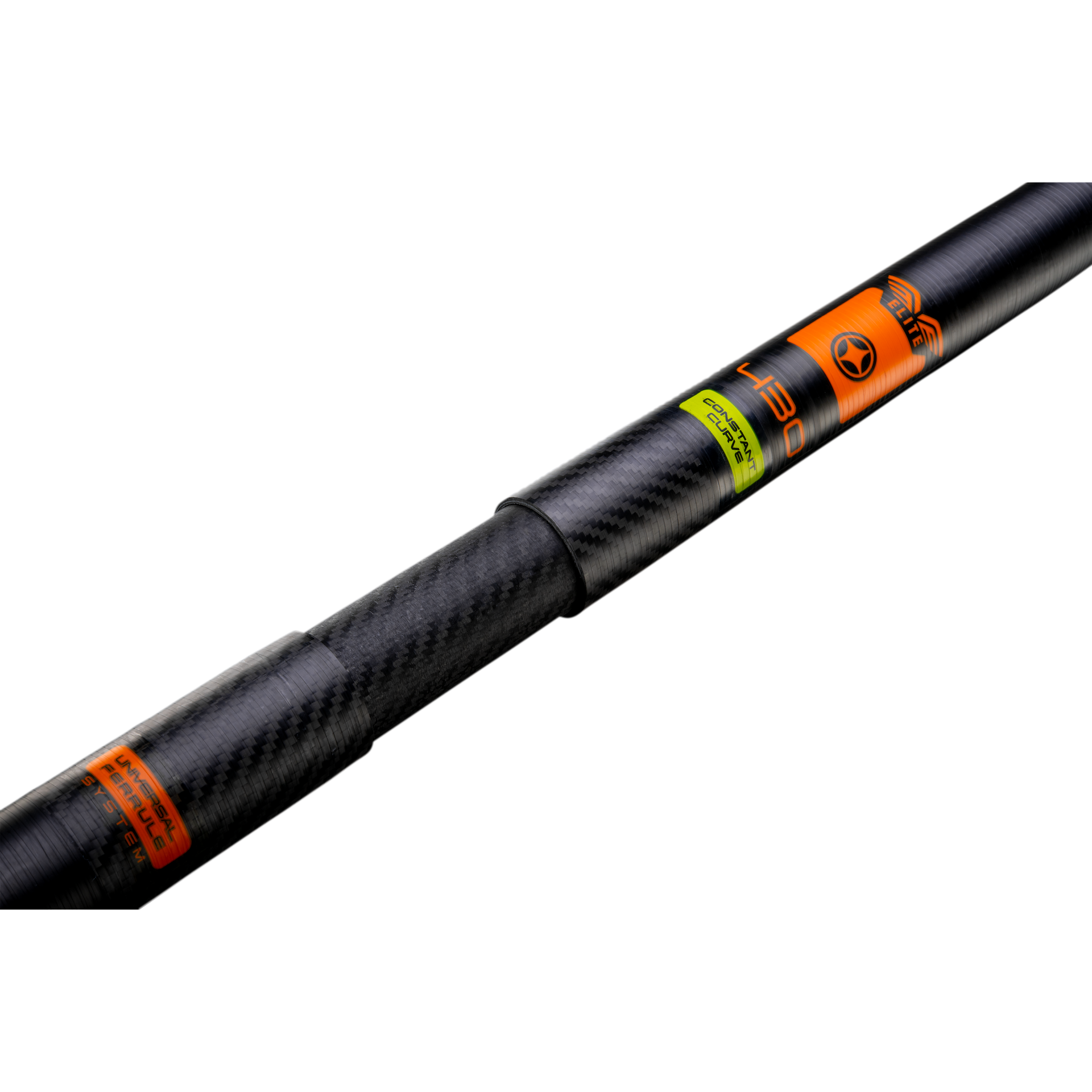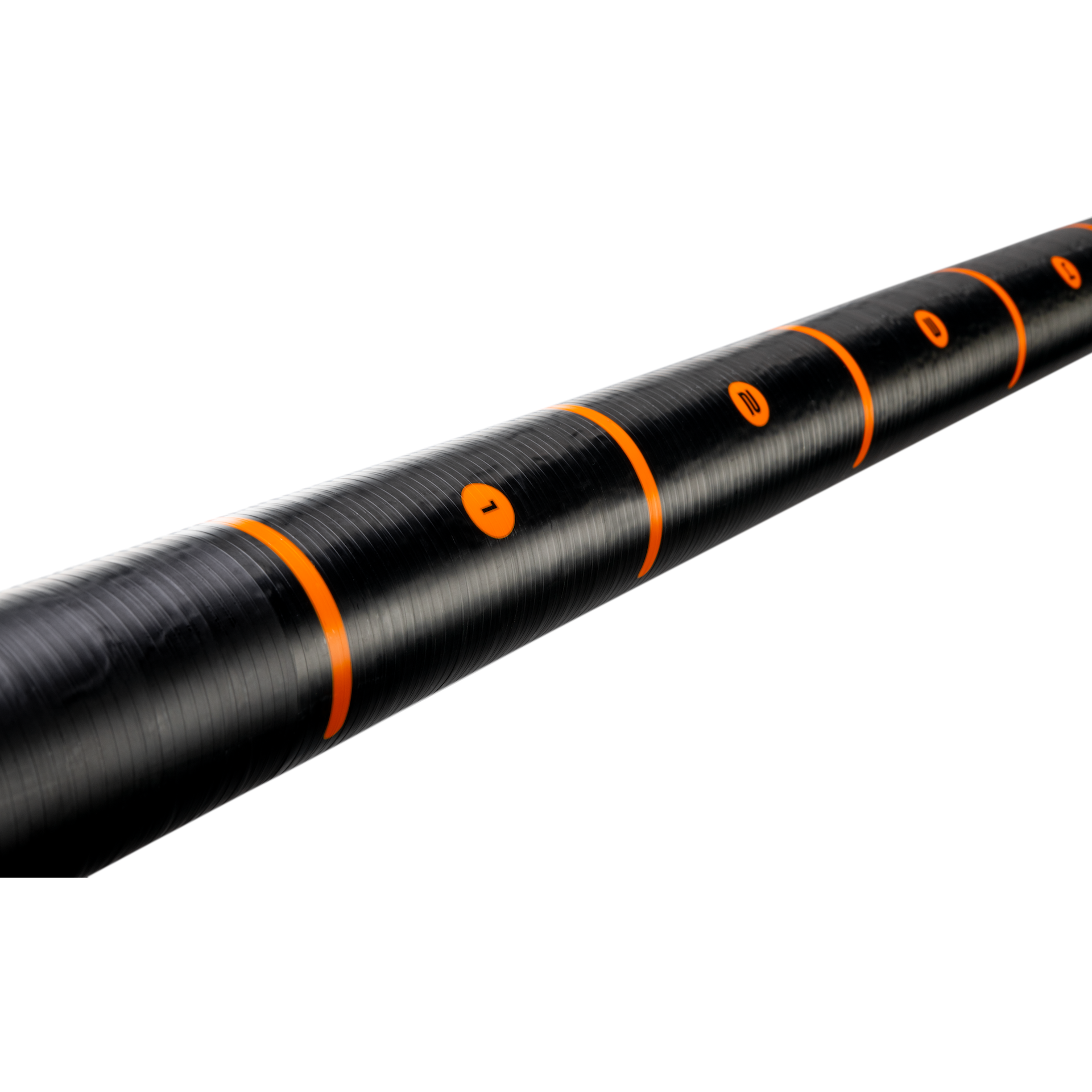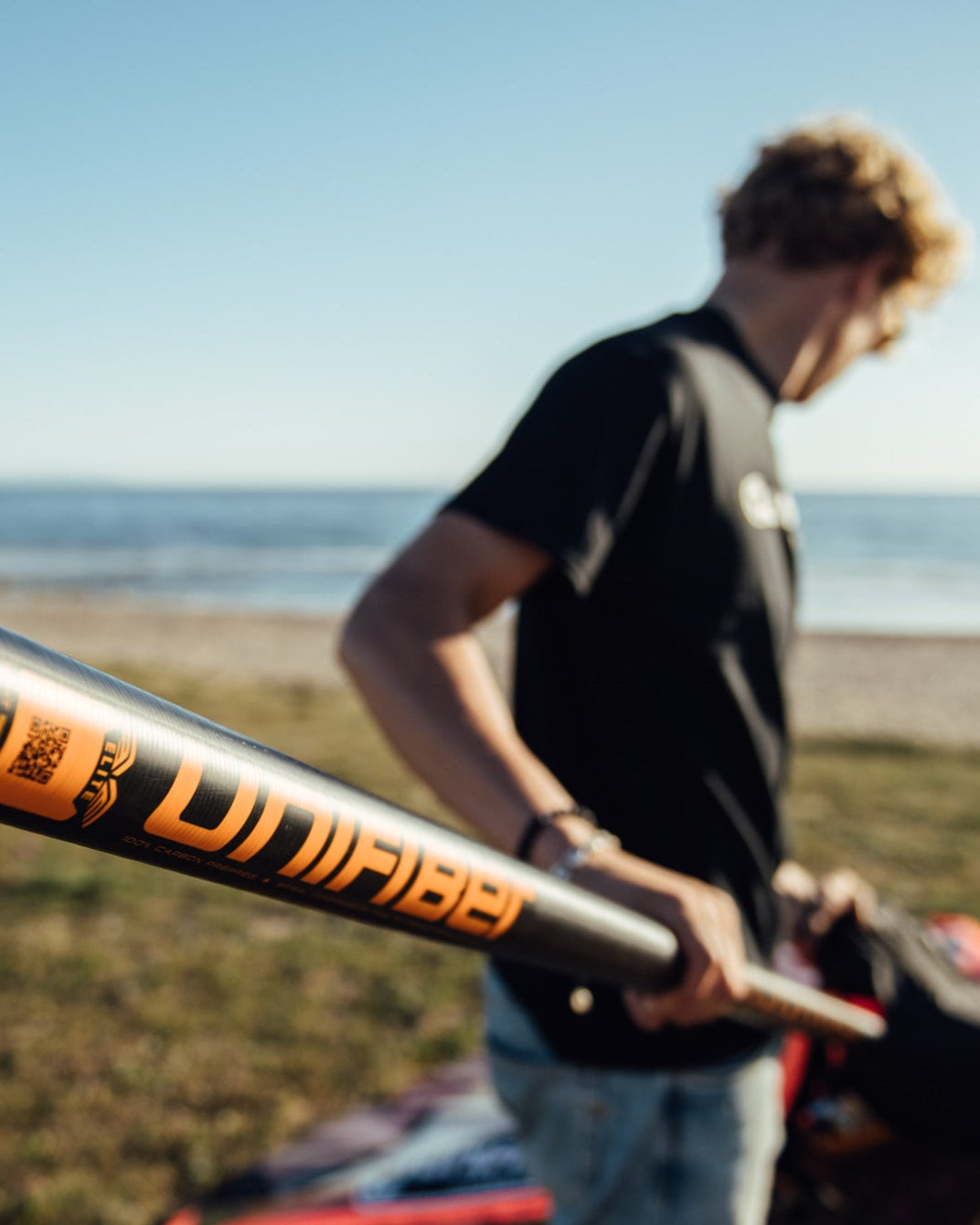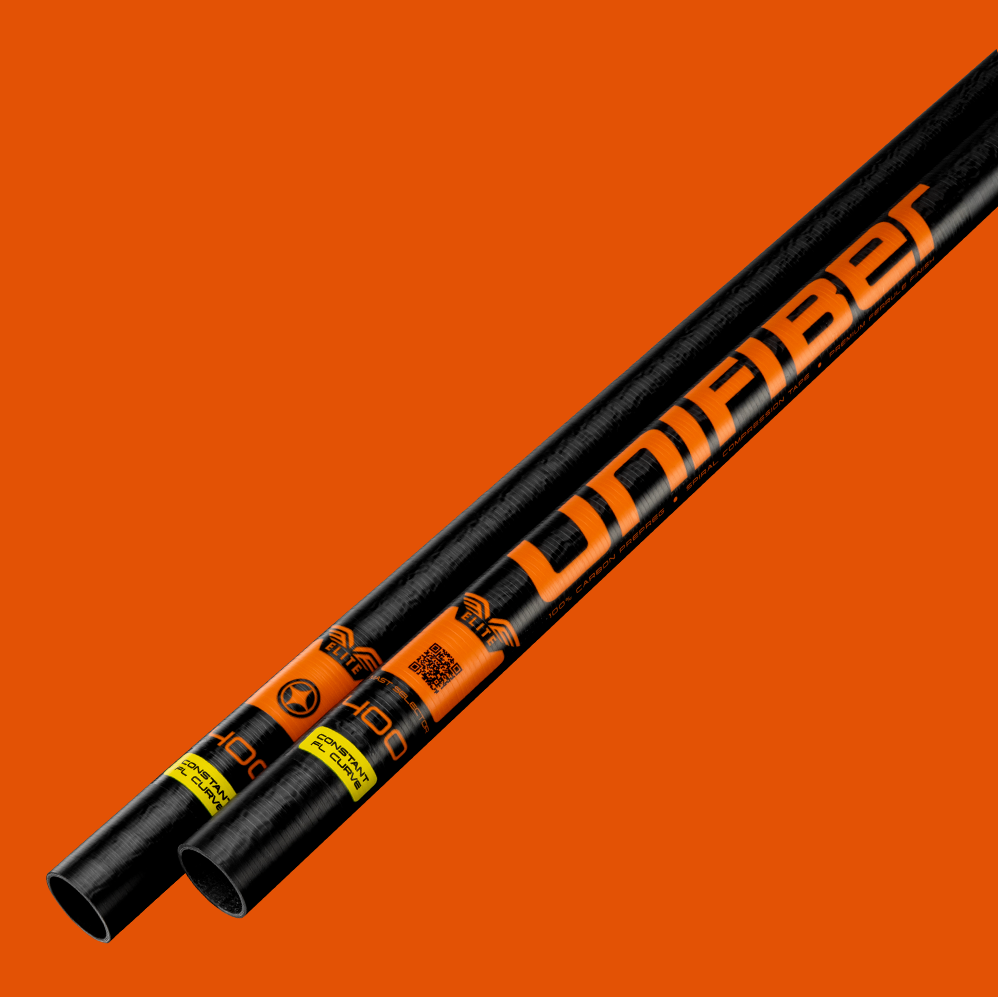

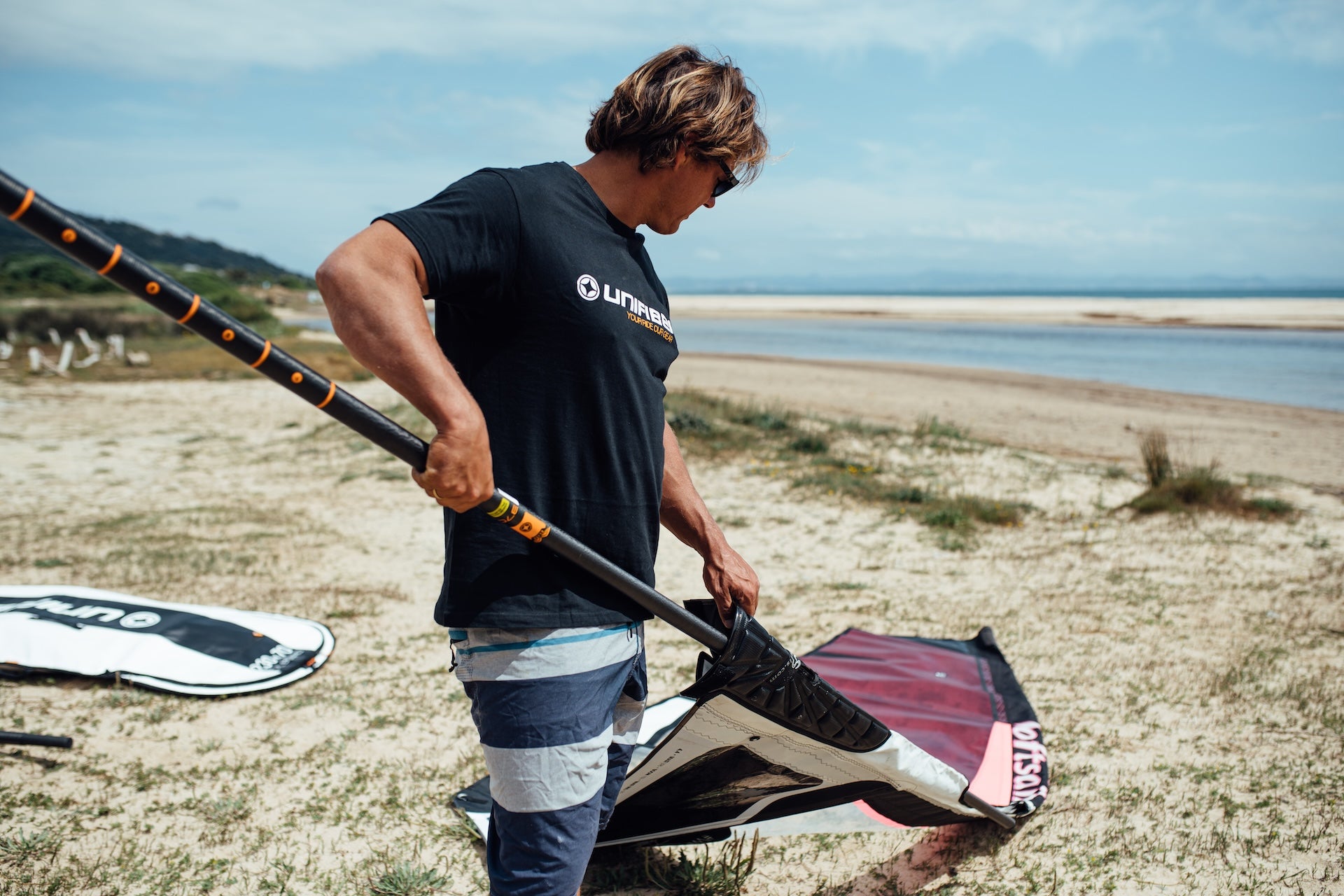
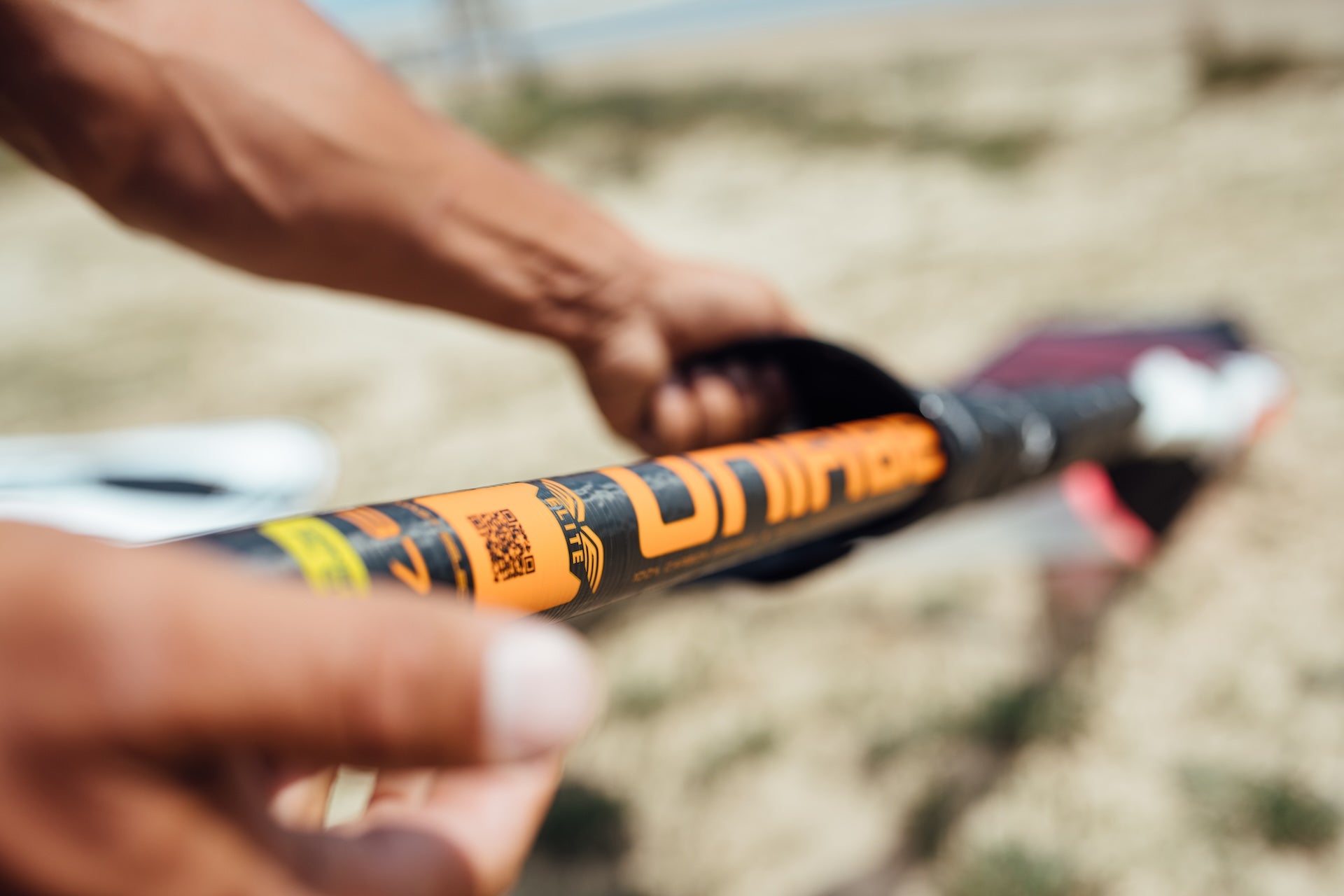

Elite RDM C100 Constant FL Curve 370 Incl. Mastbag
The right curve makes all the difference. Unifiber is the only brand to offer three distinct mast curves—so you can closely match your sail’s ideal shape. Don’t settle for close enough. Get the performance your sail was designed for.
When you’re out on the water, your gear should work as hard as you do. The Elite C100 RDM masts are designed for riders who want top performance without the top price tag. Whether you're carving waves, racing, or freeriding, these masts are built to help you push your limits and make every session unforgettable.
Why You’ll Love It:
- Lightweight & Agile: Feel the difference with a mast that’s designed to reduce swing weight, giving you better control and maneuverability. It’s all about making your ride smoother and more responsive.
- Built for Versatility: Whether you're chasing waves, racing against the clock, or enjoying a freeride session, the Elite C100 RDM masts adapt to your style. They’re the perfect all-rounder for riders who want one mast that can do it all.
- Durable & Reliable: Made with Torayca® premium carbon fiber, these masts are built to last. You’ll feel confident knowing your gear can handle whatever the water throws at you.
DESIGNED FOR:
- Advanced riders who demand the highest level of performance.
- Wave sailors looking for precision and control in critical conditions.
- Racers who need speed, power, and reliability to stay ahead of the competition.
- Freeride and freerace enthusiasts who want a mast that can handle high-speed maneuvers and aggressive riding.
At Unifiber, we know what it takes to perform at the highest level. The Elite C100 masts are crafted for riders who refuse to compromise. Whether you're carving waves, racing against the clock, or pushing the limits in freeride, these masts are designed to keep up with your ambition and skill.
- Mast Length (cm) :370
- Mast Diameter : RDM
- Mast Finishing : Matte Black Spiral Taped
- Base : 62%
- Top : 77%
- Mast Carbon Content :100%
- Carbon Quality : T700 & T800
- Mast Extension Maximum Insertion (cm) :Maximum 60
- Mast Ferrule :Universal Ferrule System

1. POINT LOADING PROTECTION
- Never leave your mast unprotected
- Always use a mast bag for storage and transport
- Avoid any direct impacts to the mast
- Check for visible damage before each session
- Carbon is extremely vulnerable to impact damage
2. SAND PROTECTION
- Clean these components before rigging:
- Apply tape between base and top sections
- Never force sections together if you feel resistance
- Rinse with fresh water after sailing
3. TENSION MANAGEMENT
- Release downhaul tension after sailing
- Never store with full downhaul overnight
- Avoid leaving the sail rigged when not in use
- Check for early signs of pre-bend
- Store mast straight when possible
COMMON QUESTIONS
Q: How often should I inspect my mast?
- Before and after each session
- Check ferrule connection points
- Look for any visible damage
- Test smooth section connection
Q: Can I repair minor mast damage?
- Minor surface scratches are acceptable
- Any structural damage requires replacement
- Never attempt DIY repairs
- Replace damaged sections using our Universal Ferrule System
What does features 1 year unconditional + 1-year conditional warranty cover ?
At Unifiber, we're confident in the quality of our gear and stand behind everything we make.
Here's how our warranty works:
- First year: Your product is completely covered - simple as that. We've got your back so you can focus on enjoying your time on the water.
- Second year: We continue to support you against any manufacturing defects because we believe in building gear that lasts.
- To make things hassle-free, just keep your proof of purchase handy when you need us., we're confident in the quality of our gear and stand behind everything we make.

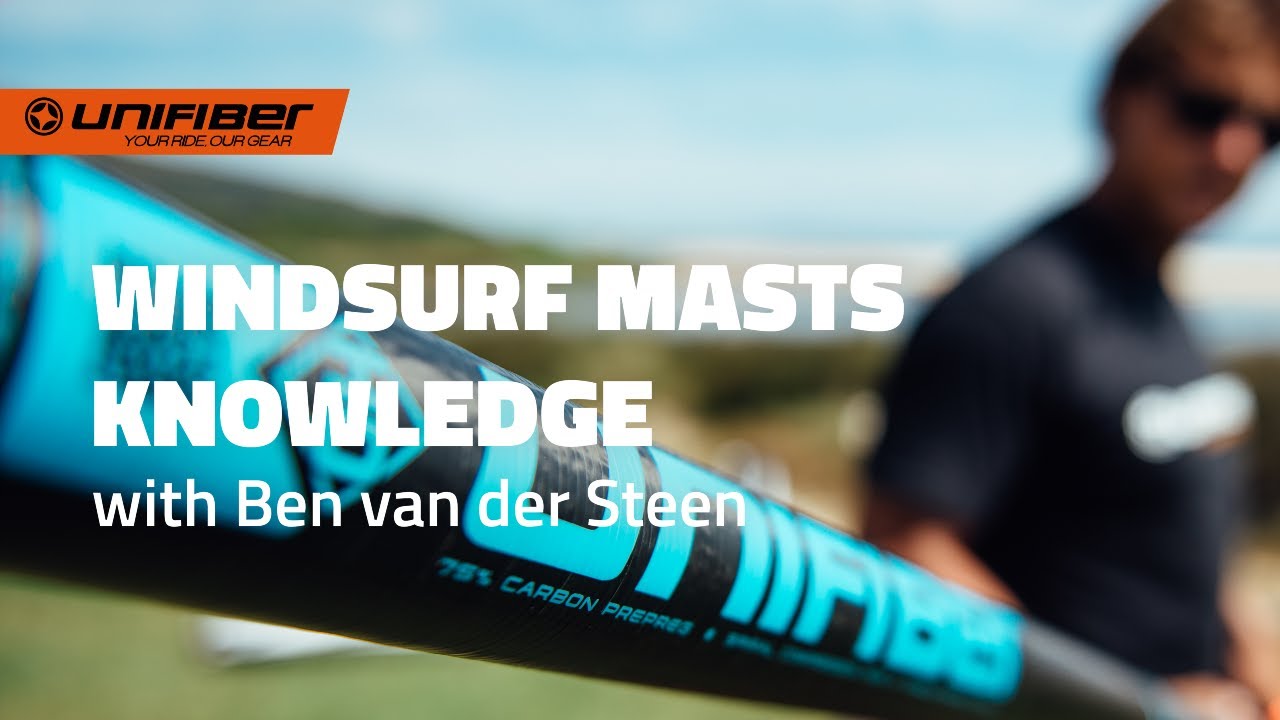
Windsurf Mast Expertise
Your windsurf mast is the backbone of your rig—literally. At the intersection of performance and technology, our premium windsurf masts are engineered to deliver the perfect balance of durability, flex response, and weight distribution.
Backed by years of research and testing in various conditions, our windsurf masts are designed to enhance your experience on the water—giving you the confidence to push your limits while ensuring reliable performance ride after ride.
What should I know about mast ferrules?
- The mast ferrule is the part that connects the base to the top of a mast. Glued ferrules are cylinders glued into the bast base, where integrated ferrules were produced together with the mast base and are slightly tapered.
- Base and top parts of the masts with an integrated ferrule cannot be ordered separately as they belong together, whereas glued ferrule mast bases and tops can be exchanged.
- Integrated ferrules tend to bend a little bit cleaner then glued ferrules as the construction is more homogeneous.
What do I need to know about mast extension insertion length?
- Because of the tapered shape of an SDM mast, there's a limit to how far one can insert the mast extension. This value relates to the total length of your extension tube, not to confuse with the range settings.
- A maximum 45 cm insertion length means that most 32cm mast extensions can be fully inserted into the mast. A maximum 60 cm insertion length means that most 46cm mast extension can be fully inserted.
- In case a non Unifiber brand extension does not fit, as an alternative solution the mast extension end cap can be removed without problem.
Does mast surface finishing really matter beyond looks?
- Besides it is a bonus if masts look eye candy there are some constructional advantages as wel. Radial compression layer is a layer wrapped around the masts to keep the fibers which are under the surface of the compression layer.
- These fibers are more in the length of the mast orientated and will bear the largest amount of stress.
- Radial compression layer help to keep these fibers in place to ensure a maximum load distribution avoiding peak tension which in case to high will cause the mast to break.
How does carbon content affect mast performance?
- The more carbon is used in the mast the more performance you can expect to get from your rig. Higher carbon percentage mast are considerable lighter so less swing weight in your rig makes it easier to control the sail.
- As well, more carbon adds also more responsiveness to the rig making the rig more efficient when the sail is twisting to control the power.
- Higher carbon masts are a little bit more fragile compared to low carbon mast as the wall thickness of the masts
is considerable smaller than lower carbon masts.
Which mast diameter should I choose: RDM or SDM?
- RDM means Reduced Diameter Mast, while SDM means Standard Diameter Mast.
- Shaped Diameter masts are slighter less thick then normal SDM masts. RDM masts have one major advantage compared to SDM masts which is that they can bend allot further without breaking.
- SDM masts are a more responsive than RDM masts.
In general, windsurfers who use masts in the waves prefer RDM masts for durability reasons.
Light rider (under 80 KG) weight flat water windsurfers can prefer larger size RDM masts(430 cm +) for comfort, where the heavier (above 80 KG windsurfer) might appreciate the additional responsiveness of an SDM masts.
- SDM shaped masts are a slightly more durable solution compared dedicated SDM shaped masts.
Why weight matter for a mast ?
- Mast weight does matter. The lighter the mast the lighter the sail handling will be.
- Import to take in account is the swing weight of the masts due to it's length longer and heavier masts create high momentum compared to lighter masts.
What's Mast Flex numbers ?
Mast Top %
- The higher the percentage the more Hard Top the mast.
- Typical percentages are between 65% which is a typical Hard Top value or 60% which is considered as already extreme Flex Top value.
Mast Base %
- The higher the percentage the more Flex Top the mast.
- Typical percentages are between 74% which is a typical Hard Top value or 80% which is considered as typical Flex Top value.
- The higher the percentage the more the top will bend.
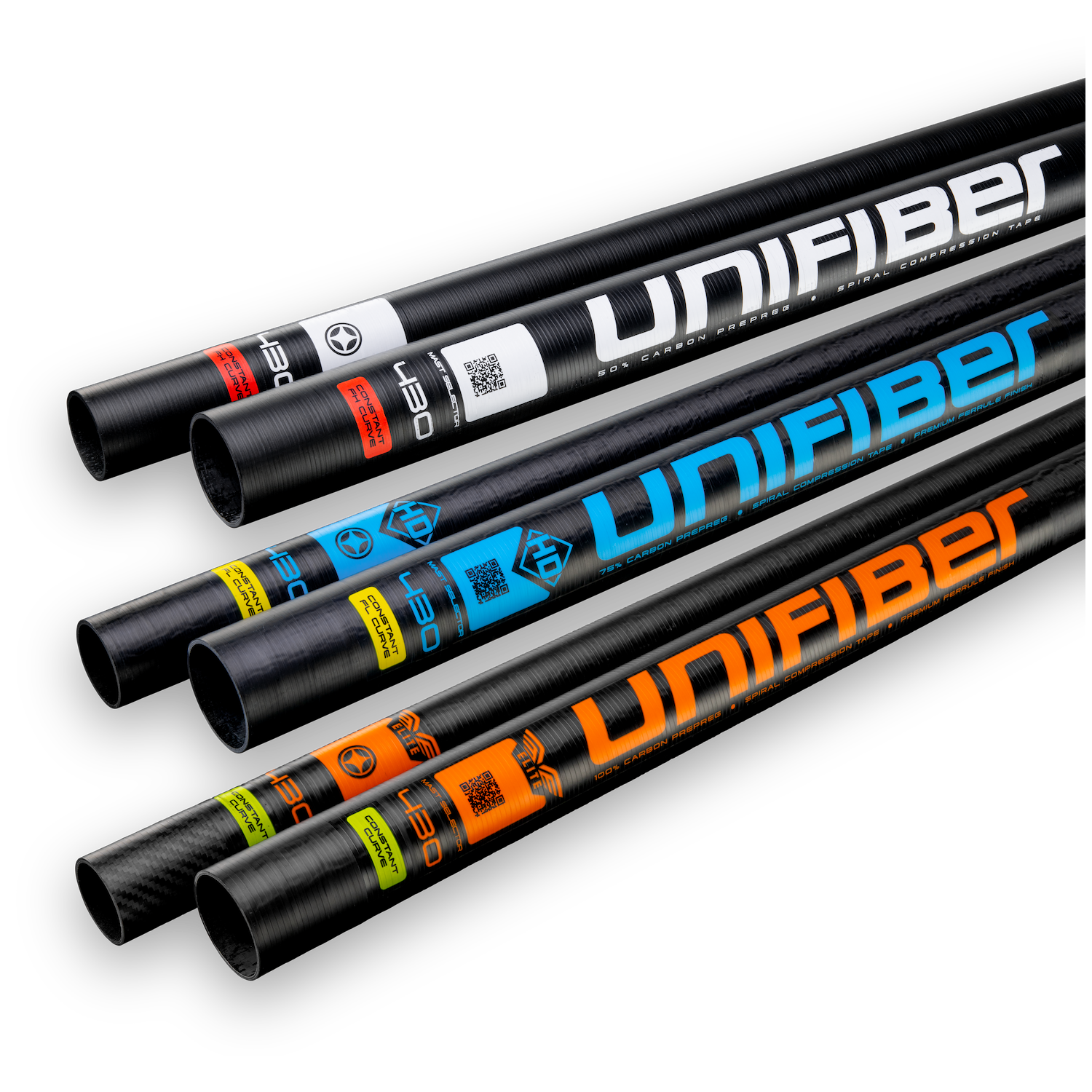
Rigorous Testing: Proving Performance Under Pressure
Unifiber Masts: Built to Last
Every mast we create is built on decades of windsurfing experience. We carefully select premium materials and reinforce critical stress points, because we know you need gear that performs consistently in all conditions.
Our rigorous testing and precision construction process ensures your mast will be ready whenever the wind calls. And with our comprehensive warranty covering your gear, you can focus on what really matters - those perfect moments on the water.
Windsurfing Masts FAQs
Think of your windsurfing mast as the spine of your rig - it doesn't just hold your sail up, it actively shapes how your gear performs on the water. When you're carving through chop or catching air off waves, your mast is working hard, flexing and responding to every move you make
Choosing the right mast can significantly impact your windsurfing performance and enjoyment.
Understanding Mast Specifications:
Let's break down these tech specs into what really matters - how your mast will feel and perform in the conditions you love to ride. Whether you're just starting out or looking to fine-tune your quiver, we'll help you find the mast that matches your style.
Our FAQ aims to provide you with the necessary information to demystify mast specifications and help you pick the best mast for your needs.
When it comes to windsurfing masts, there are two main types: Standard Diameter Masts (SDM) and Reduced Diameter Masts (RDM). Here's a quick overview of each type and their key features:
Standard Diameter Masts
- Thicker diameter, typically around 48-50mm at the base
- Stiffer compared to RDM
- Ideal for larger sails
- Provides more stability and power transmission
- Compatible with a wide range of sail sizes and brands
Reduced Diameter Masts
- Thinner diameter, usually around 38-40mm at the base
- More flexible and lightweight compared to SDM
- Perfect for smaller sails
Offers improved handling and maneuverability - Enhances the sail's responsiveness and feel
Consider factors such as sail size, wind conditions, and desired performance characteristics when making your decision.
Both types have their strengths and can greatly enhance your windsurfing experience when matched correctly with the right sail.
In testing Unifiber masts can endure stress of up to 180 kg.
Unifiber RDM masts have a 33-mm. internal diameter up to 600 mm. from the base, tapering to 32mm above 600mm
We recommends a minimum of 100 mm. of mast extension to overlap the inside of the mast to prevent stress load damaging the base of the mast.
Unifiber RDM masts stay at a constant 33 mm. internal width up to 600 mm. into the base section. Beyond 600 mm. the internal width tapers to 32 mm.
Unifiber masts give unbeatable value for money, performance, and durability thanks to a consistent pre-preg manufacturing process and a high-quality surface finish.
Unifiber offers 82 different mast choices in carbon content, diameter and 3 different bend curves to match almost any sail in the winfsurfing maket. We are simply the most versatile and inclusive mast brand and a worldwide expert on mast measurements.
IMCS, which stands for "Indexed Mast Check System," is a standardized method for measuring and comparing the stiffness of windsurfing masts, regardless of their length. This system allows sailors to easily compare the relative stiffness of different masts, even if they are not the same size.

